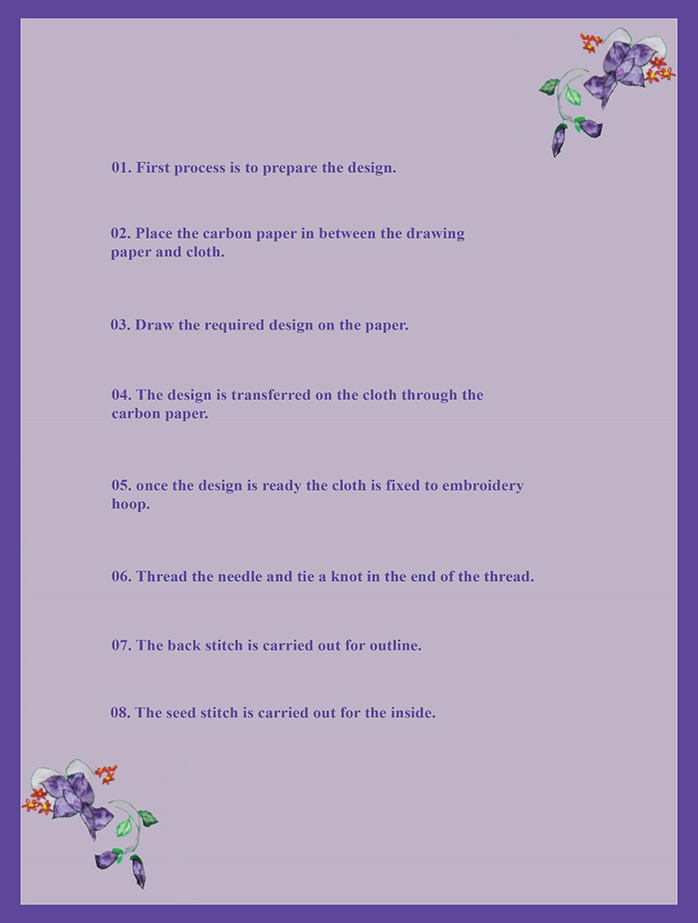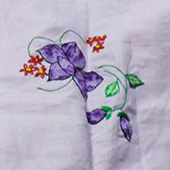Design Resource
Pillow Cover Embroidery - Panaji, Goa
Decorative Art
by
Prof. Bibhudutta Baraland Srikanth B.
The first process is to draw the required design on the paper. The drawn design is placed on the cloth and traced by using carbon tracing paper. Now the design is transferred on the cloth. Once the tracing is done, the cloth is carefully fixed to the wooden embroidery hoop. The needle is threaded and a knot is tied at the end of the thread. Then actual embroidery starts. The embroidery involves the different types of stitches. Here artisan uses the backstitch for outline and seed stitch to fill the design. Different colour threads are used to make embroidery art. Once the embroidery is done the extra threads are cut and the cloth is removed from the wooden hoop.
Here artist used two types of stitches, back stitch and seed stitch.
Back Stitch:
The backstitch creates a solid line and is good for outlining a design. It is a very strong stitch. Begin by pulling the needle and thread up through the fabric and do one stitch forward. From underneath, space the needle out the length of the desired stitch, Pull up through the fabric, and the needle and thread brought back down through the end of the previous stitch.
Seed Stitch:
The seed stitch is also considered a running stitch. It is also called a rice grain stitch. This is done by making a running stitch in one single direction until the whole design is filled. This stitch creates lots of small stitches like seeds on the material.
Flowchart:












